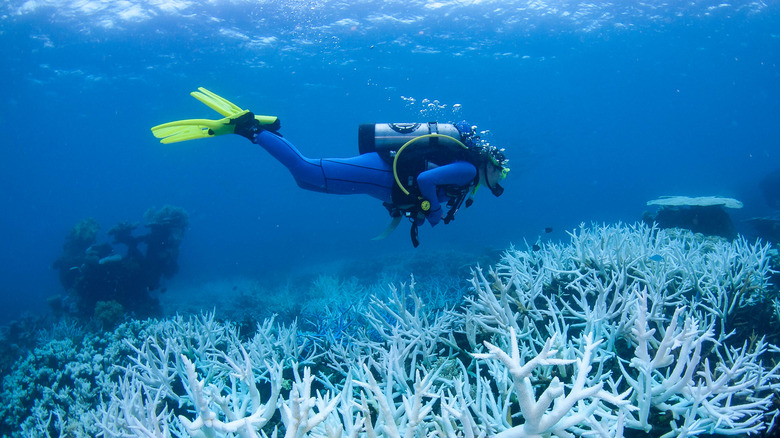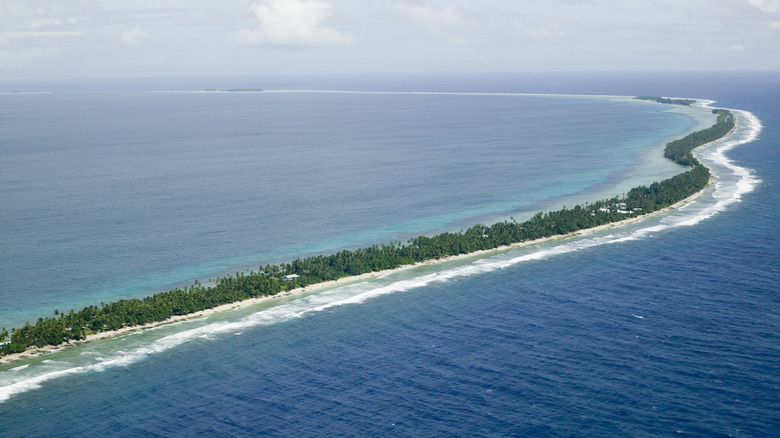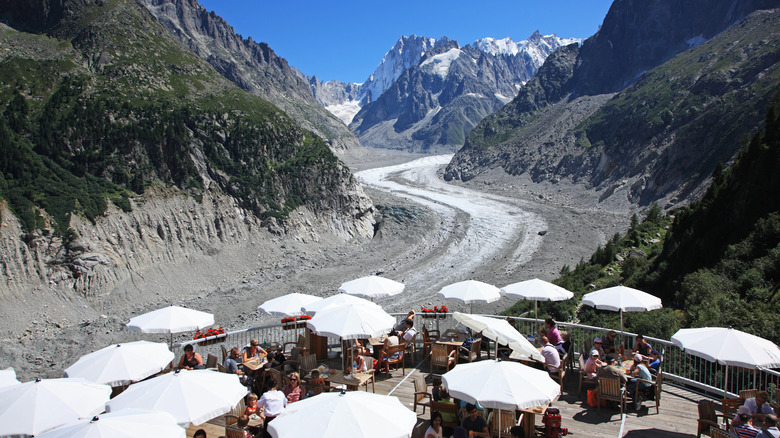Get A Farewell Tour Of Glaciers, Reefs, Islands, And Forests On The 'Last Chance Tourism' Trend
The climate change reality is finally setting in, and as the world continues to warm, travelers are rushing to see what they can before it disappears. "Last Chance Tourism" is an established trend that is driving people to visit some of the world's most endangered destinations. This group of locations in peril includes not only glaciers, which are melting faster and faster every year, and coral reefs, which are dying in mass bleaching events, but also sinking islands and vanishing rainforests.
While the world still struggles to address and manage the impacts of climate change, tourists are going to see what they can while they can, which has stirred up a conversation about this controversial trend. Aside from the fact that this kind of travel is motivated by an impending sense of climate doom, critics also argue that increased tourism can quicken the rate of destruction for these destinations. However, others attest that promoting these destinations and encouraging people to visit (in a sustainable way) can positively impact supporting infrastructure to protect these places and raise awareness of climate change. With tourism growing worldwide, more and more people are hopping on the last chance tourism trend.
Destinations most likely to disappear
With temperatures rising every year, glaciers are the most at risk of vanishing. In the French Alps, travelers are rushing to visit Mer de Glace, a 3.5-mile-long glacier that is melting at a rate of about 130 feet per year. On the other side of the Atlantic, Glacier National Park is one of the most endangered national parks in the U.S., with its glaciers shrinking by about 80% in the past half-century. All this melting ice, which is an even bigger problem in the Arctic Circle than it is in the mountains, directly corresponds to rising sea levels. That not only affects remote tropical islands like Tuvalu but is also slowly sinking cities like Venice. The Italian canal city is sinking at a rate five times faster than was previously predicted while struggling to combat overtourism.
Destinations beloved for their biodiversity are also at high risk. Rising water temperatures eviscerate large sections of Australia's Great Barrier Reef, which is home to almost 9,000 species that depend on the health of the corals. The Amazon rainforest, on the other hand, is suffering from too little water as rising global temperatures cause droughts and create perfect conditions for wildfires, endangering the millions of species dependent on the unique ecology of the world's largest rainforest. In Africa, the rainforest of the Congo Basin, home to endangered species like African forest elephants and mountain gorillas, is also expected to become vulnerable due to deforestation and ecosystem degradation.
Does last chance tourism have a positive impact, or is it making things worse?
Since the trend of last chance tourism emerged nearly a decade ago, many scientists have been measuring its effects on various destinations. In France, researchers from the University of Savoy Mont Blanc surveyed visitors at the Mer de Glace glacier about whether or not witnessing climate change in action would result in more sustainable behavior. The results were positive, with 77% of respondents stating they would reduce their water and energy consumption and 80% saying they would continue trying to educate themselves and others about the risks to the environment.
However, the study, published in Current Issues in Tourism, also points out there is a natural irony to this situation, calling last chance tourism paradoxical. "Visitors travel long distances to see landscapes and ecosystems endangered by climate change; however, the [greenhouse gas] emissions emitted while traveling to such destinations threaten these very landscapes and ecosystems." Less than half of respondents said they would limit their vacations to destinations closer to home, indicating that they plan to continue traveling abroad, continuing to contribute to air pollution. At Mer de Glace specifically, there has been a lot of controversy surrounding the construction of a new cable car that makes it easier for more people to visit the glacier, which may not be the best thing for its survival. So while many travelers rightly want to visit these endangered destinations before they're gone forever — potentially within our lifetimes — do some research before you travel to make sure that you're doing so in an environmentally sustainable way.


